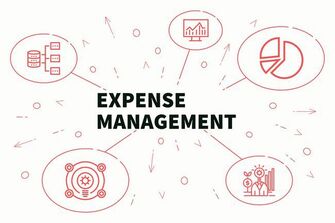In Pursuit of Profit
Read our expert article below or sign up to get articles sent to your inbox.
 Over the last several years commercial insurance rates have been making the headlines of business news outlets in a way that has been difficult to read, and even more difficult to bear! Why? U.S. commercial insurance rates rose 6.6% on average in Q4 of 2023 compared to the same period in the year prior with Commercial Auto, CMP/BOP (Commercial Multi-Peril/Business Owner’s Policy), General Liability, Commercial Property, and Excess Umbrella policies reflecting the highest price increases. According to analysts, the rise is primarily due to increased losses, higher court awards, and widening exposures. A recent article from the global commercial insurance channel, Business Insurance, reveals that on top of these widespread price increases General Liability coverage is also getting more restrictive in response to state law changes. And while General Liability rate increases seem to be lower for insurance policy renewals (especially for multi-line policies), they are trending upward as well. The experts point out that given the current climate, businesses with a history of significant losses or greater risk exposure will likely face increased underwriting scrutiny and unfavorable pricing rates through 2024 and into 2025. So, what do these changes mean for your organization, and how should it respond? We’re here to help you understand how to view this topic through an accounting lens so your business can be better prepared financially! 1/11/2023 How to Adjust Prices for Inflation
In an article on how consumers are responding to inflation Andy Pandharikar explains, For many years, the inflation rate in the United States has been relatively low, hovering around 2%. However, in recent months, that rate has increased dramatically, nearing 7%. However, if we measure according to the Bureau of Labor Statistics’ methodology from 1980 that figure exceeds 13%. Inflation in specific categories like ground beef has been even higher, nearing 20%. As prices rise more quickly than wages, many consumers are finding it difficult to afford basic needs. Of course, the risk for businesses is significant. Improperly managed pricing can either cost the company its customers or its profits, either of which ends in failure. Prices need to hit a sweet spot where they can generate profitable revenue and are because enough people are buying.
5/23/2022 What Should I Pay My Accountant? We hear this question every day from business owners: “How much should I pay an accountant?” Unfortunately, there is not a single right answer. Like any other occupation, an accountant’s salary is determined by a variety of factors. There are the usual variables like location and years of experience, but there are also unique determiners for accountants like professional licenses and accounting focus area. And then there is the ongoing war for talent to consider, which has made the topic of compensation even trickier! If you want to know how much to pay your accountant, use this accountant salary guide to inform your compensation discussions and help you to make smart accounting recruiting decisions:  Call it what you want – cost cutting, cost containment, downsizing, cutbacks, or expense management. It all describes the same approach of reducing costs to weather an obstacle or downturn. In times of both slow decline and also rapid disruption we see companies go to the same well of pulling back on expenses. Some organizations may take a more surgical approach, carefully carving out smaller expenses from targeted areas to improve their overall financial health, while others may have a more knee-jerk reaction, slashing costs across all areas. But whether cuts are being done with a scalpel or a cleaver, expense management software has become the must-have tool for managing costs, especially while staffing challenges remain high. These days companies tend to implement expense management software for just that purpose – to help with reducing costs related to purchasing and processing reimbursements. And with only 54% of companies currently tracking the cost of processing expense reports, this has become an area ripe for cost reduction over the last year.  We talk to people every day that are looking for accountants for their companies. And being in the business of staffing organizations through both full-time hires and outsourced accounting services, we have noticed a trend in people’s thinking… Business owners and hiring managers typically categorize their hiring intentions into one of two buckets: a part-time bookkeeper/bookkeeping service or a full-time accountant hire. But many business leaders overlook the value that a part-time accountant (or “fractional accountant” as they are referred to in the industry) can provide to their organization. Whether the organization is for-profit or not-for-profit, a fractional accountant can be brought in for a variety of reasons to provide the same level of expertise of a full-time, dedicated accountant. While a fractional accountant from an accounting service provider may work on a less than full-time basis, their experience-level is as high (if not higher) than your average accountant. The reason a fractional accountant may bring a greater breadth of experience the role is because they work with a variety of companies across a different industries and lifecycles simultaneously, which requires that they be well versed in a wide variety of accounting topics and stay abreast of all the latest news. As a result, fractional accountants may offer more accounting acumen at a much lower cost than their full-time counterpart.  Written in conjunction with our partners at CFO Selections A cash flow shortage is the number one reason why small businesses fail, but even mid-sized and large companies need smart cash flow management to survive and thrive. Insufficient cash forces companies to make difficult decisions about who is going to get paid and when. Unfortunately, this can lead to vendors and suppliers being paid late, being overdue on rent, even employees waiting on paychecks. It is not an exaggeration to say that cash is the lifeblood of any business. Not having enough money to pay for expenses can erode business credibility, which leads to:
Ultimately, a company’s potential will be stifled if there is not enough capital to invest in the assets that facilitate growth, and its very existence can be threatened as well. So, are you ready to manage cash flow for the coming year?  As an accounting recruiting firm and financial services provider, we work with businesses everyday who ask, “Should we hire or outsource our accounting needs?” This question is especially important for companies in the startup phase because they likely have significant cash flow concerns to consider. However, startups may also have other unique characteristics that make this question more challenging to answer, such as:
While every business will have their own unique needs and challenges, it is generally best for a startup to outsource their accounting activities initially and then hire internally as their needs change. Where does that shift happen?  A guest post from our partners at CFO Selections. With an increased focus on financial planning and analysis (FP&A) in recent years, many companies have begun asking, “Do accountants do financial planning?” For cash-strapped startups and small businesses the temptation to simply add to their accountant’s workload is strong. However, this is not a wise decision. While overloading any one role presents problems on its own, entrusting accountants with FP&A poses its own unique risks. The differences between accounting and FP&A necessitate that it be handled by separate personnel with unique skillsets and performance objectives. Understanding what FP&A entails and what is at stake can help organizations make smart decisions about who should handle this critical responsibility. 3/3/2021 What is Contingent Recruitment? According to recent data, 76% of companies report that attracting well-qualified candidates is their biggest hiring challenge, making recruitment a serious concern for most businesses. Hiring a recruiting firm is the best way to find top-notch candidates for your open positions. While some recruiting agencies use a retainer model, others use a contingency agreement. How do you decide which approach is best for your needs? With contingent recruitment, the recruiting agency only gets paid when they find and place a qualified candidate into the role they are hiring for on behalf of their client. Contingency recruiting fees are typically structured as a percentage of the candidate’s first-year base salary and can vary widely from one recruiting company to another based on geography, industry, and position level. Why Use Contingency Recruiting? Unlike retained search, where recruiting fees are typically paid in installments at the beginning and throughout the process, contingent recruiting is based on the idea of only paying once results have been achieved. Many companies prefer to work with a recruiting agency that uses a contingency model because it is often much less expensive, and the fees are easier to understand. It is reassuring to hiring companies, especially smaller businesses, to know that they will not be paying a recruiting fee until after a qualified candidate has been hired.  A guest post from our colleagues at CFO Selections: When adversity hits, the knee jerk reaction is to swiftly cut spending across the entire organization, but that response is a mistake. Strategic cost cutting can keep a business going through tough times, but it must be approached with long-term value in mind. Reducing costs should abide by three essential principals:
Evaluate your spending and determine where you can cut costs to weather tough times while still protecting critical functions, minimizing long-term expenses, spending where it could end up costing more not to do so, and looking for opportunities to reduce waste. |
SUBSCRIBE:DOWNLOAD:DOWNLOAD:Categories:
All
Archives:
July 2024
|
Services |
Company |
|
7/17/2024